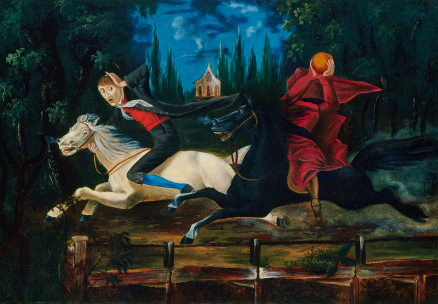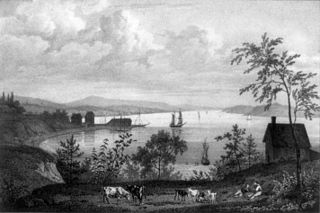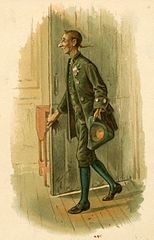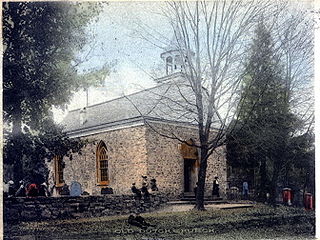
October is best known for Halloween, a spooky holiday on the last evening of the month. The day is associated with costumes, ‘trick-or-treating,’ and spooky stories of ghosts and other supernatural beings. The Legend of Sleepy Hollow, published by American writer Washington Irving in 1819, is one of the most well-known. The famous headless horseman is only one part of the story. Today’s blog is the first of an October series centered on this famous American legend.
The Real Sleepy Hollow
There is, in fact, a Village of Sleepy Hollow, located on the Hudson River, 25 miles north of New York City. The area was first settled by Dutch colonists who came to New Netherlands for a life not unlike their life in Holland. Dutch landlords established estates with tenant farmers. In 1655 Adriane Van Der Donck, published the name of his village: Slapershaven, or Sleepers’ Haven. It isn’t a long stretch to reach the name Sleepy Hollow. In 1664, the British took over the colony and called it New York.

By the 18th century Sleepy Hollow was a central point for farmers in the area who came into the village to attend events at the Dutch church founded in 1697, and bring their crops to the mill. By 1776, residents were a mixture of Dutch-American, French Huguenot, Swiss, and German. The majority of tenant farmers supported the American Revolution and were able to purchase their farms after the war.
One of the officers during the war, a Major General William Heath, kept a journal. His entry from Nov 1, 1776: “A shot fired from the American cannon at this place [White Plains] took off the head of a Hessian artillery man.” Thus began the tale of the headless horseman.
In 1798 while a yellow fever raged in New York City, Washington Irving and his friend decided to wait out the epidemic in Tarrytown, about 10 miles away from White Plains, and very close to Sleepy Hollow. They explored the area and listened to the local folklore.
Meet Ichabod Crane

There was once, Irving wrote, an unfortunate man named Ichabod Crane. He was tall, but exceedingly lank, with narrow shoulders, long arms and legs, hands that dangled a mile out of his sleeves, feet that might have served as shovels, and his whole frame most loosely hung together. His head was small, and flat at top, with huge ears, large green glassy eyes, and a long snip nose, so that it looked like a weather cock perched upon his spindle neck to tell which way the wind blew.
Crane taught at the local school. The revenue arising from his school was small, and would have been scarcely sufficient to furnish him with daily bread, for he was a huge feeder, and, though lank, had the dilating powers of an anaconda; but to help out his maintenance he was … boarded and lodged at the houses of the farmers whose children he instructed. With these he lived successively a week at a time, thus going the rounds of the neighborhood, with all his worldly effects tied up in a cotton handkerchief.

You might think such a person would suffer from low self-esteem, but that was not entirely the case. In addition to his other activities, Crane earned extra money as a singing-master. It was a matter of no little vanity to him on Sundays, to take his station in front of the church gallery, with a band of chosen singers; where, in his own mind, he completely carried away the palm from the parson. In fact, Crane’s voice resounded far above the rest of the congregation, and there are peculiar quavers still to be heard in that church…which are said to be legitimately descended from the nose of Ichabod Crane.
On long winter evenings, Crane liked to visit with the old Dutch wives as they sat spinning by the fire, with a row of apples roasting and spluttering along the hearth, and listen to their marvelous tales of ghost and goblins, and … particularly of the headless horseman, or Galloping Hessian of the Hollow, as they sometimes called him.
Such tales were deliciously frightening while sitting by the fire, and a source of terror as Crane made his way home in the darkness when he was often thrown into complete dismay by some rushing blast, howling among the trees in the idea that it was the Galloping Hessian.
Walking through the woods on a moonless night, many people are nervous. The transition from apprehension to abject terror often begins with a single unexpected sound.

Illustrations
Ichabod Crane & the Headless Horseman
Tarrytown 1828
Ichabod Crane by Edwin Austin Abbey
Old Dutch Church, Sleepy Hollow
Pumpkin by Evan Swigart
The Legend of Sleepy Hollow. Gutenberg Project.
Jacqueline Smith. “Halloween History: The Legend of Sleepy Hollow.” New York Historical Society. Oct. 25, 2013.

Sandra Wagner-Wright holds the doctoral degree in history and taught women’s and global history at the University of Hawai`i. Sandra travels for her research, most recently to Salem, Massachusetts, the setting of her new Salem Stories series. She also enjoys traveling for new experiences. Recent trips include Antarctica and a river cruise on the Rhine from Amsterdam to Basel.
Sandra particularly likes writing about strong women who make a difference. She lives in Hilo, Hawai`i with her family and writes a blog relating to history, travel, and the idiosyncrasies of life.

